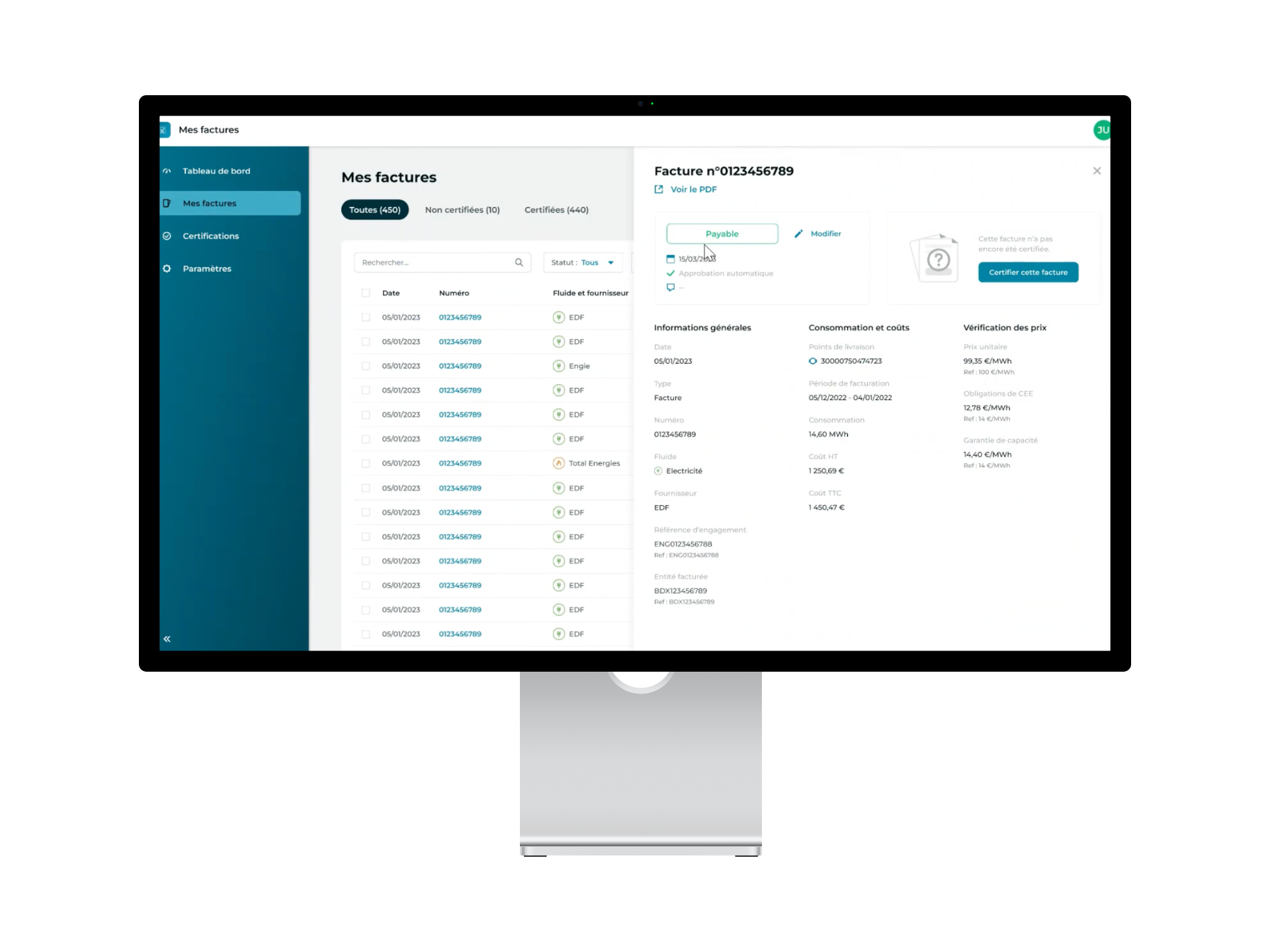Is your company listed on the stock exchange, does it have a turnover of more than 100 million euros or does it have more than 500 employees? In this case, it is required to publish an annual CSR report.
The CSR report (or corporate social responsibility report) is a regulatory document in which the company communicates on its social and environmental actions and results.
Since 2017, CSR regulations have evolved. Following the implementation of the European directive on extra-financial reporting, companies subject to the CSR obligation must now publish a declaration of extra-financial performance (DPEF) in their management report. Companies not bound by this obligation may nevertheless submit a statement if they wish to highlight their CSR actions.
In practice, the DPEF replaces the CSR reporting system established by Grenelle II. In substance, the two documents have the same objectives. On the other hand, there are differences in the form.
In this article, we present the best practices to know when writing a CSR report or an Extra-Financial Performance Statement. What is the plan to follow? What information must you include in these reports?
What information should a CSR report contain?
CSR reporting has a dual purpose:
- Internally, it allows the company to measure the impact of its activity on the environment and on society. It serves as a guideline for setting up action plans to improve its processes and limit the negative effects of its activities.
- It also enables the company to communicate to its stakeholders about its efforts in terms of social and environmental responsibility. For example, it is useful for convincing or reassuring consumers, partners or potential investors about the values and actions implemented.
The « Grenelle II » CSR reporting system required companies to provide information on 43 themes, divided into 3 main categories, as follows:
Identification of social themes in the CSR report
The CSR report includes an environmental assessment of the company’s activities but also an economic and social assessment. The social section focuses in particular on the concern for well-being and the employee experience.
You can include your initiatives related to working conditions and employment, for example:
Employment
- The company’s total workforce and the breakdown of employees by gender, age and location
- Hirings and dismissals
- Remuneration and its evolution
Work organization
- The organization of working time (for example, telecommuting initiatives)
- Absenteeism
Social relations
- The organization of social dialogue, including internal communication, staff consultation and negotiation actions
- Assessment of collective agreements
Health and safety
- Health and safety conditions at work (in particular the actions implemented to limit workplace accidents)
- The assessment of agreements signed with trade unions or staff representatives in terms of health and safety at work
Training
- Training policies
- The total number of training hours
Diversity and equal opportunities/equal treatment
- The policy and actions in favor of equality between women and men
- The policy and measures taken in favor of the employment and integration of disabled people
- The policy and measures to combat discrimination
Promotion of and compliance with the stipulations of the ILO’s fundamental conventions on
- Respect for freedom of association and the right to collective bargaining
- Elimination of discrimination in respect of employment and occupation
- Elimination of forced or compulsory labor
- Effective abolition of child labor
The definition of social issues in CSR reporting
This second part of the CSR report includes information on the impact of your activities on society at large. It includes your impact on the territory, your ecosystem of partners, relations with consumers, etc.
The following information can be included in this section:
Impact of your activity on the territory
- On employment and regional development
- On local populations
Relationships maintained with the company’s stakeholders
- The conditions of dialogue with your stakeholders (partners, suppliers, local authorities, etc.)
- Partnership or sponsorship actions
Subcontracting and suppliers
- The consideration of CSR issues in your purchasing policy
- Taking into account CSR issues in your relations with suppliers and subcontractors
Fairness of practices
- The actions taken to prevent corruption
- The measures taken to protect the health and safety of consumers
Human rights
- The actions taken in favor of human rights
Environmental themes
Finally, the CSR report includes an activity report on the environmental actions taken by the company. Indeed, it is in the interest of companies to communicate on their results regarding environmental regulations and their actions in terms of sustainable development.
Environmental policy
- The organization of the company to take into account environmental issues and, if applicable, the environmental assessment or certification procedures
- The training and information actions aimed at employees to promote environmental protection internally
- The resources devoted to the prevention of environmental risks and pollution
- The amount of provisions and guarantees for environmental risks
Pollution and waste management
- Measures to prevent, reduce or repair discharges into the air, water and soil
- Measures to prevent, recycle and eliminate waste
- Taking into account noise pollution and any other form of pollution specific to an activity
Sustainable use of resources
- Water consumption and water supply
- Raw material consumption and measures taken to improve the efficiency of their use
- Energy consumption, measures taken to improve energy efficiency, and the use of renewable energy
- Land use
Climate change
- Greenhouse gas emissions
- Adaptation to the consequences of climate change
Protection of biodiversity
- Measures taken to protect biodiversity
The company’s greenhouse gas emissions balance (GHG balance)
Legally, the CSR report must include the company’s carbon footprint. Within the framework of the energy and environmental transition, companies must show their commitment to sustainable development. They must also meet environmental regulatory objectives.
The GHG assessment has several advantages for the company:
- Continuously measuring and optimizing its actions in terms of reducing energy consumption and greenhouse gas emissions
- Strengthen its image with the company’s stakeholders, who are sensitive to environmental issues
- Put forward a competitive advantage over competitors who are less advanced on these subjects
How to write an Extra-Financial Performance Statement?
While the « Grenelle II » CSR reporting did not include any specific constraints in terms of presentation of information, the DPEF integrates new requirements, particularly in terms of form.
In fact, CSR reporting required information on 43 CSR themes. This exhaustiveness obliged companies to present numerous elements, some irrelevant to their activity.
On the contrary, the DPEF invites companies to focus on the main CSR risks related to their activity.
For each significant risk, the regulations provide for a well-coded presentation, in the form of :
Risk > Policies > Action plans > Results > KPIs
This is a significant change, as Grenelle II did not specify the type of information to be presented (qualitative, quantitative, etc.).
In principle, the DPEF allows for greater conciseness and clarity. In concrete terms, the document must include:
Business model
The « business model » is a comprehensive presentation of the company and its activities. It includes the following elements:
- the main activities of the company (organization, operational processes…)
- the main resources used in your activities (raw materials, incoming products and services, energy, human resources, financial resources…)
- the main achievements (markets, products, services…)
- Elements related to the company’s strategy and perspectives (stakes, objectives, market trends, future directions, vision, values and commitments…)
A description of the significant risks
The novel feature of the DPEF is that it presents the main risks to which the company is exposed as a result of its activities. It is therefore up to the company to analyze and prioritize its risks in order to determine which ones require specific CSR policies.
This analysis should result in a presentation of 12 to 15 significant social, societal and environmental risks.
Policies and procedures applied to each identified risk
The company must present the policies implemented for each of the identified risks. This section highlights the company’s commitments to combat or minimize the risk. It also presents the organization and resources implemented.
You should also list here the measures and action plans undertaken to prevent or mitigate the risks.
Results and KPIs related to the policies carried out
Finally, the company must provide a presentation of the observed results of the implemented policies. This presentation may contain:
- A description of the actions actually implemented as well as an assessment of the context that impacted their implementation
- The presentation and assessment of the results obtained
This section must show the KPIs relating to the CSR policies implemented.
The drafting of a CSR report is essential to communicate both internally and externally on the company’s social, societal and environmental actions. The CSR report and the DPEF have similar objectives but differ in form.
Above all, the way in which you collect the data upstream of the drafting process largely determines the quality of your report.
For environmental reporting, in particular, the use of a centralized data collection, processing and analysis solution facilitates the collection of the information and KPIs required to build your reports.









